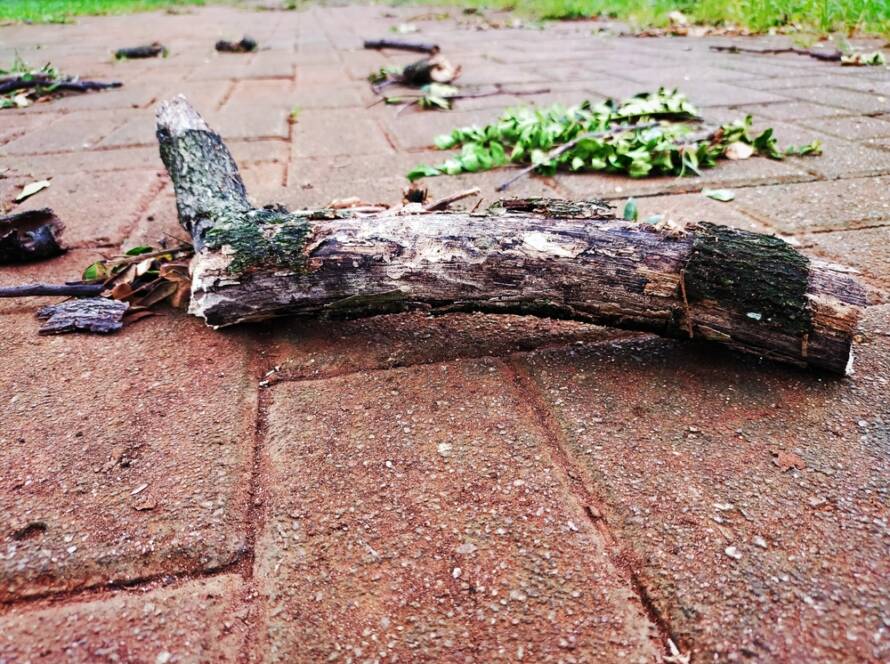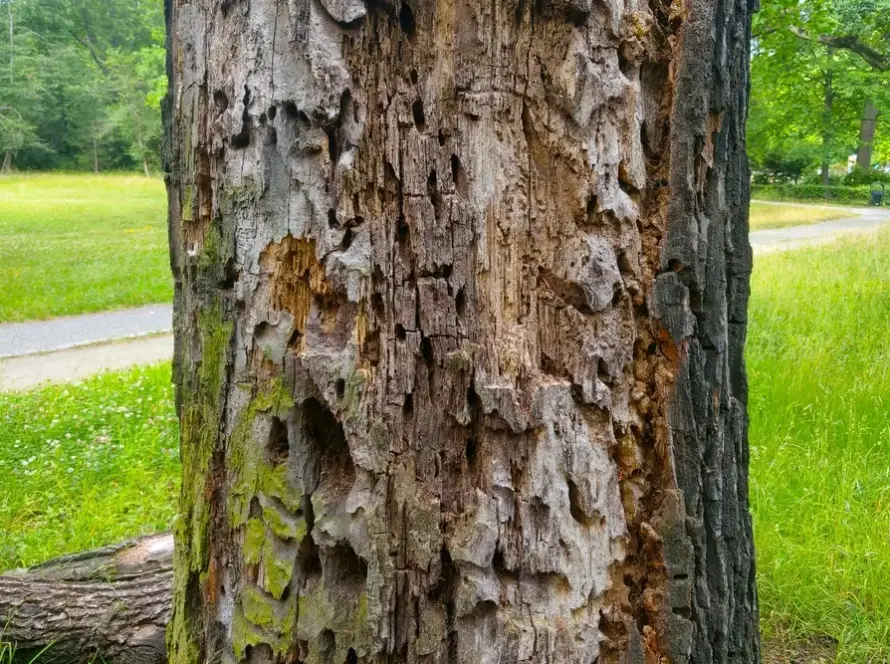Cold weather can be beautiful, but it can also be harsh on your trees. Heavy snow, ice buildup, and fluctuating temperatures put stress on branches and roots, sometimes leading to long-term damage. Investing in proper winter tree protection and tree freeze protection helps your landscape stay healthy, prevents costly removals, and keeps your property safe. This guide explains the most common winter hazards, how to prepare your trees, and when to call in a professional for seasonal care.
Common Winter Hazards for Trees
Winter creates unique challenges for trees. Knowing what to watch for will help you act early and avoid expensive problems later.
- Heavy snow and ice accumulation: Wet, heavy snow or layers of ice can weigh down branches, causing them to bend or break. Large broken limbs may fall on driveways, power lines, or your home.
- Fluctuating temperatures and freezing conditions: Sudden warm days followed by freezing nights cause bark to crack, known as frost cracks. These open wounds leave trees vulnerable to pests and disease, making tree freeze protection crucial in colder regions.
- Dehydration and root damage: Even in winter, trees need moisture. Dry soil and frozen ground can restrict water uptake, stressing roots and reducing spring growth.
- Salt damage: Salt used to melt ice on roads and sidewalks can burn roots and harm foliage when it seeps into soil or splashes onto lower branches.
- Animal browsing: Deer, rabbits, and rodents often feed on bark, twigs, and buds during winter when food is scarce, which can weaken or kill young trees.
- High winds and storms: Strong gusts combined with frozen soil can loosen roots and topple unstable trees, especially older or diseased ones.
Using Mulch and Watering to Protect Trees in Winter
Mulch and proper watering are simple but powerful steps in tree winter protection and tree freeze protection.
- Apply a mulch layer: Spread 2–4 inches of organic mulch, such as shredded bark or wood chips, around the base of each tree. Keep mulch a few inches away from the trunk to prevent rot. Mulch insulates roots, regulates soil temperature, and retains moisture during cold, dry spells.
- Water before the ground freezes: In late fall, give your trees a deep, slow watering to hydrate roots before winter. Well-hydrated trees are more resilient against drying winds and frozen soil.
- Check moisture on warm winter days: If there’s a mid-winter thaw and the soil isn’t frozen, watering evergreen trees can help them combat seasonal dryness.
- Avoid over-mulching: While mulch is protective, piling it too high around the trunk can lead to rot and attract pests.
If you’re wondering how to protect young trees in winter, these steps are especially important. Younger trees have smaller, less-established root systems and thinner bark, making them more vulnerable to cold damage. Mulching correctly and watering before the first freeze can give them the strength to survive harsh conditions.
Signs Your Tree Needs Winter Maintenance
Pay attention to these warning signs so you can act before damage worsens:
- Cracks or splits in the trunk: Vertical cracks that appear suddenly after freezing weather may expose inner wood and invite decay.
- Dead or hanging branches: Limbs that have broken under snow or ice should be pruned promptly to prevent further tearing or property damage.
- Leaning or unstable trees: Trees that suddenly lean after storms or high winds could have root issues and may need professional inspection.
- Excessive salt exposure: Browning needles, wilted buds, or discolored bark near driveways and walkways may indicate salt damage.
- Animal chewing: Gnawed bark or stripped lower branches are signs of wildlife feeding that can girdle and weaken young trees.
- Sparse or discolored evergreens: Evergreen trees showing yellow or brown needles mid-winter may be suffering from desiccation or nutrient deficiency.
Spotting these issues early gives you time to address them before spring growth begins.
Hiring a Professional for Winter Tree Care
Some winter tasks are safe to do yourself, such as mulching and deep watering. However, larger jobs often require expert skills and equipment.
Professional arborists can:
- Safely prune large branches: Removing damaged or overhanging limbs during winter reduces the risk of spring breakage and protects nearby structures.
- Inspect for hidden damage: Specialists can identify frost cracks, pests, or diseases not visible to untrained eyes.
- Provide cabling and bracing: Weak or split branches may need structural support to survive snow and wind.
- Assess stability after storms: A professional can determine whether leaning or uprooted trees can be saved or must be removed.
- Perform controlled removals: If a tree becomes hazardous, experts use proper rigging and equipment to safely remove it without risking your property or safety.
If you’re unsure how to protect young trees in winter or suspect deeper damage from freezing conditions, hiring a certified arborist ensures the right approach is taken for your landscape’s long-term health.
Keep Your Trees Strong All Winter Long
Investing in tree winter protection and effective tree freeze protection now pays off when spring arrives with healthy, thriving trees. By understanding seasonal hazards, adding mulch and water at the right time, and calling in experts when needed, you can safeguard your landscape and avoid costly damage. If you’re unsure about a tree’s stability or health, scheduling an inspection with a licensed, insured arborist can give you peace of mind and keep your property safe all winter long.
At Lopez Tree Services, we provide expert winter tree care in Virginia, including pruning, storm damage prevention, and reliable winter tree protection. Contact us today if you need help protecting young or mature trees.




